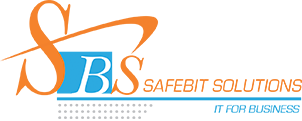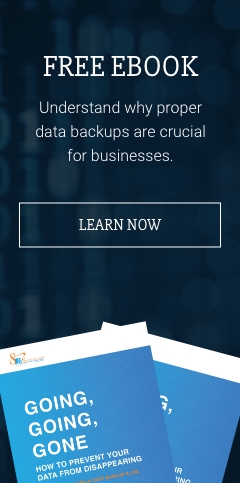Confused by the barrage of IT acronyms and technical jargon? Let’s speak in plain language to better understand the role of modern technology in business IT. Here are some of the most common terms you’ll come across when evaluating technology solutions and vendors:
Asset management
In the technology sector, asset management refers to the methodology for managing every IT system used in the business. This includes, but isn’t limited to, servers, workstations, mobile devices, networking hardware, and off-site assets like cloud applications and storage services.
Breach notification
If personally identifiable or payment information belonging to customers is stolen from your database or disclosed without proper authorization, you’re legally required to notify affected customers. For large breaches, certain regulations also require you to alert the authorities and major media outlets.
Bring your own device (BYOD)
Employees are growing accustomed to using their own smartphones and other devices for work. While affordable and convenient, this presents additional security risks. A BYOD policy serves to control and manage employee-owned devices used for work.
Cloud computing
Cloud computing basically refers to using someone else’s computer for things like application hosting and data storage. The computer in question is typically a server rack in a major data center, such as those belonging to Microsoft, Google, or Amazon.
Data breach
Most cyberattacks take the form of data breaches, in which sensitive information is acquired by a hacker through methods like social engineering or malicious software. Businesses should take every reasonable step to prevent data breaches such as educating employees on cybersecurity, and keeping programs updated.
Disaster recovery planning (DRP)
Whether it’s due to natural disasters, human error, failing hardware, a data breach, or anything else, DRP refers to a predefined remediation strategy designed to get your business back up and running with minimal losses.
Firewall
In technology, a firewall is thedigital analog to a fireproof wall in a building. It monitors traffic between your network and the public internet to proactively prevent malware from getting in and quarantine suspicious activity.
Infrastructure as a service (IaaS)
One of the three main categories of cloud computing, IaaS provides virtualized resources over the internet. These resources may include servers, storage networks, or networking hardware hosted off-site rather than in an on-premises data center.
Intrusion detection and prevention system (IDS/IPS)
Intrusion detection and prevention extends upon the abilities of an enterprise firewall to add an extra layer of protection to the business. An IPS detects and classifies traffic and attempts to stop malicious activity, while an IDS only monitors and sends alerts of potential policy violations.
Legacy systems
In computing, legacy systems refer to hardware or software that have been superseded by a newer model or version. Legacy systems are usually unsupported by their original developer, which makes them more vulnerable to a data breach.
Malware
Any kind of malicious software is commonly referred to as malware, a broad term that includes everything from conventional computer viruses to ransomware to cryptojacking software to trojans and spyware.
Managed IT services
As businesses move away from the high expenses and lack of cost predictability of in-house computing resources, outsourcing IT tasks is becoming more popular. A third-party manages the fulfillment of those multifarious tasks as a bespoke mix of services to augment or replace your existing IT department.
Mobile device management (MDM)
Things like smartphones and tablets pose high cybersecurity risks because they’re much more likely to get lost or stolen than desktop devices. This necessitates a centralized management solution that lets administrators control devices remotely and, if necessary, remotely wipe them.
Platform as a service (PaaS)
One of the three primary categories of cloud computing, PaaS refers to a third-party computing model whereby the hardware and software tools needed for things like app development are delivered through the internet.
Software as a service (SaaS)
The most common of the three main categories of cloud computing, SaaS refers to any app that runs in an internet browser. Examples include web-based email like Gmail, social networking sites, online storage, and the online components of Microsoft Office 365.
Voice over internet protocol (VoIP)
The new age of business phone systems has heralded the rise of online telephony systems that use your internet connection rather than the traditional landline. VoIP is typically cheaper, more scalable, and lends to higher-quality calls and video conferences.
Web filtering
Web filtering proactively blocks potentially malicious or blacklisted websites to improve staff productivity and/or reduce risk to the organization. Enterprise-grade web filtering solutions let administrators assemble policies governing the way employees use the internet at work.
Still have questions? Talk to the team at Safebit Solutions to learn how our comprehensive IT solutions can help your business grow.


